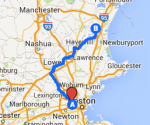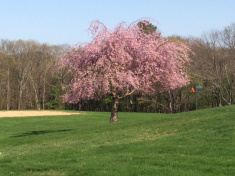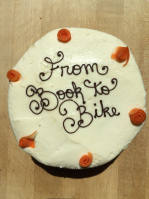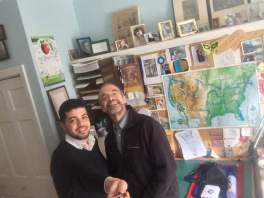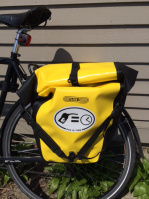Paul E. Fallon's Blog, page 76
May 7, 2015
Trip Log – Day 1 – Cambridge, MA to Seabrook, NH
Miles to Date: 65
May 6, 2015
As I pedaled away from the Alewife T station, against the flow of commuters filing into the subway, I murmured, ‘one mile down, 20,000 more to go.’ A fellow cyclist passed me along the Minuteman Rail Trail, asked about my shirt, and told me he’d cycled the lower 48 over a three-year period after college. When he waved goodbye as he turned out, I didn’t feel required to tell him I was only three miles into my epic journey. My ‘48 States*2 Wheels*1000 Possibilities’ shirt may be presumptuous at this point, but I have finally started.
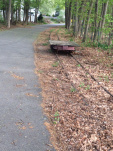 Conditions are perfect; sixty-eight degrees and sunny. I ride 25 miles to Lowell for my first visit – to the Cambodian Mutual Assistance Association (CMAA) to talk with refugee immigrants about how we will live tomorrow. There are several bikeways, including one along the Bedford/Billerica railroad – the oldest 2-foot gauge railroad in America.
Conditions are perfect; sixty-eight degrees and sunny. I ride 25 miles to Lowell for my first visit – to the Cambodian Mutual Assistance Association (CMAA) to talk with refugee immigrants about how we will live tomorrow. There are several bikeways, including one along the Bedford/Billerica railroad – the oldest 2-foot gauge railroad in America.
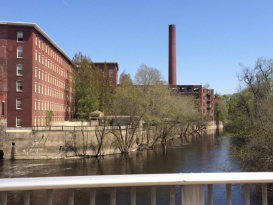 By noon I am back on the bike marveling at Lowell’s tenacity. The has-been mill city powered by Merrimac River thrives by cobbling together an eclectic array of economic activity: artist lofts, an urban National Park around the old mills, light industry, UMass Lowell and Middlesex Community College, as well as accommodating, and finally embracing, a huge influx of Cambodians since 1980.
By noon I am back on the bike marveling at Lowell’s tenacity. The has-been mill city powered by Merrimac River thrives by cobbling together an eclectic array of economic activity: artist lofts, an urban National Park around the old mills, light industry, UMass Lowell and Middlesex Community College, as well as accommodating, and finally embracing, a huge influx of Cambodians since 1980.
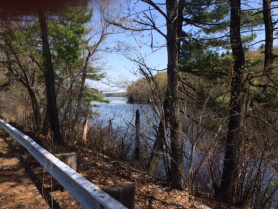 One unexpected delight is riding 30 miles along Route 110 East, which parallels the Merrimac River. My mind wanders to Thoreau’s Week on the Concord and Merrimac Rivers. There are still stretches where the majestically wide river and forested banks dimpled with springtime gold turning green must look quite similar to the river he navigated 176 years ago. However, he didn’t have to navigate five (yes, five) intersections with I-495.
One unexpected delight is riding 30 miles along Route 110 East, which parallels the Merrimac River. My mind wanders to Thoreau’s Week on the Concord and Merrimac Rivers. There are still stretches where the majestically wide river and forested banks dimpled with springtime gold turning green must look quite similar to the river he navigated 176 years ago. However, he didn’t have to navigate five (yes, five) intersections with I-495.
Why do cyclists ride against the traffic once I’m 20 miles outside of Boston?
Does any other state have as many ice cream stands as Massachusetts? They are all packed with customers mid-day, mid-week and it’s not even summer yet.
I get cut off twice – both times by BMW’s.
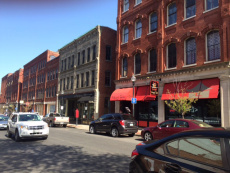 If Lowell has many Cambodians, Lawrence feels completely Hispanic. The women wear brilliant skirts with layers of ruffles and the Catholic churches have busy mid-day masses. Haverhill doesn’t have such a clear ethnic definition, but is much larger and better restored than I imagined. Merrimac is quaint; Amesbury is picturesque as a movie set.
If Lowell has many Cambodians, Lawrence feels completely Hispanic. The women wear brilliant skirts with layers of ruffles and the Catholic churches have busy mid-day masses. Haverhill doesn’t have such a clear ethnic definition, but is much larger and better restored than I imagined. Merrimac is quaint; Amesbury is picturesque as a movie set.
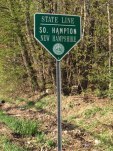 I arrive in Seabrook and have a relaxing evening visiting my good friend Harry Mears. He feeds me, introduces me to John Oliver’s comedic take on the news, and gives me a comfortable bed for the night.
I arrive in Seabrook and have a relaxing evening visiting my good friend Harry Mears. He feeds me, introduces me to John Oliver’s comedic take on the news, and gives me a comfortable bed for the night.


May 5, 2015
Trip Log T-1: Acknowledgements
 I want to thank everyone who has tried to fatten me up. Larry gave an amazing send-off dinner with four courses that culminated in me staring at the biggest piece of tres leche cake I’ve ever seen, until I ate it all. My penchant for sweets is well known; two days ago our refrigerator was blessed with a red velvet cake plus two carrot cakes, thanks to Joe, Jeffrey and Paul. Still, the scale this morning registered my usual weight.
I want to thank everyone who has tried to fatten me up. Larry gave an amazing send-off dinner with four courses that culminated in me staring at the biggest piece of tres leche cake I’ve ever seen, until I ate it all. My penchant for sweets is well known; two days ago our refrigerator was blessed with a red velvet cake plus two carrot cakes, thanks to Joe, Jeffrey and Paul. Still, the scale this morning registered my usual weight.
My panniers, however, are already getting heavier. Rida gave me a selfie stick, and though I vowed not to carry one, I’m going to give it a try. Cousin Andrew gave me a ‘gas = time’ sticker for my vehicle, which is as light in ounces as it is in meaning.
My friend and fellow architect Dave Deininger gave me a truly meaningful departure note. Dave rode his bike across our country 34 years ago. He reminded me why we undertake such journeys:
I found that my trip reconfirmed my faith in human nature. You will find that the bike will be an easy conversation piece to begin informal interactions with folks along the way. I found that people were kind, open, and generous to me, a perfect stranger “not from around these parts”.
The other piece that was wonderful was the meditative quality of biking itself; slowly pushing through all the various landscapes and weather conditions. I found that it allowed my mind to clear and I could ruminate about all sorts of unrelated topics; sort of a stream of consciousness existence.
My biggest debt of thanks goes to my beloved housemate, Paul, who enables my adventures in spirit and in so many practical ways every day.
More from the road…


May 4, 2015
The Fine Print
 ‘Awesome’ is the most common response I get from people when I describe my upcoming trip. ‘Crazy’ runs a distant second, and ‘Dangerous’ a close third. Though I prefer to focus on the awesome aspects of my journey – the physical exhilaration and mental hejira – I cannot ignore the truth of concerned friends who think I’m crazy and what I am doing is dangerous. And so, in the spirit of full disclosure and the covenant I feel between my readers and me, here is the fine print of my odyssey. Just like when you buy a car or take out a mortgage, its time to acknowledge the gruesome details of what can go wrong immediately before signing the irrevocable commitment. Since my second favorite quote is Susan Jeffers, “Feel the fear and do it anyway”, this is where I own the fear. Because I am doing this anyway.
‘Awesome’ is the most common response I get from people when I describe my upcoming trip. ‘Crazy’ runs a distant second, and ‘Dangerous’ a close third. Though I prefer to focus on the awesome aspects of my journey – the physical exhilaration and mental hejira – I cannot ignore the truth of concerned friends who think I’m crazy and what I am doing is dangerous. And so, in the spirit of full disclosure and the covenant I feel between my readers and me, here is the fine print of my odyssey. Just like when you buy a car or take out a mortgage, its time to acknowledge the gruesome details of what can go wrong immediately before signing the irrevocable commitment. Since my second favorite quote is Susan Jeffers, “Feel the fear and do it anyway”, this is where I own the fear. Because I am doing this anyway.
The day before I launched my blog, How will we live tomorrow?’ my friend Joe’s brother suffered a heart attack while riding his mountain bike, fell, hit his head, and was unconscious for some period before he was resuscitated. After two weeks of complicated medical intervention, he died. He was 53. Joe’s brother could have had a heart attack surfing the web, just as I could have a heart attack on my way to the library. But realistically, I am more likely to get hurt – and less likely to get prompt medical attention – riding my bike across America than if I stayed in Cambridge. I know that. I accept that. I have decided the experience is worth the risk. I am doing everything I can to be safe; I’m a cautious cyclist decked out in bright yellow with reflective panniers and bright lights. But none of that will matter if even one driver behind the wheel of a two-ton vehicle steers a few feet wrong.
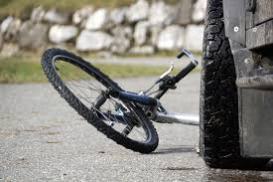 I’ve attended to all the messy details so many of us put off until tomorrow: my will, my medical proxy, my organ donor card. If I get taken out short and quick, the world might as well use what’s still valuable, and tidying up after me ought to be easy for those left behind. If I get taken out short and quick, find solace in knowing I quit the earth doing what I love.
I’ve attended to all the messy details so many of us put off until tomorrow: my will, my medical proxy, my organ donor card. If I get taken out short and quick, the world might as well use what’s still valuable, and tidying up after me ought to be easy for those left behind. If I get taken out short and quick, find solace in knowing I quit the earth doing what I love.
Writing these words will make me safer by making me more cognizant of the dangers I’m inviting into my life. We cannot control the future. But if we have a vision of what it might be, we can work toward that vision. I cannot control my fate on the road. But if I’m aware of what a fragile yellow speck I am on the face of this continent, I can be doubly careful to navigate well.
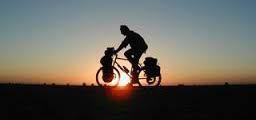 That’s all the doom and gloom I wish to share. Get ready for pedaling out on Wednesday. You will be safer than me, in the comfort of your bedroom or your office. But rest assured, I’ll be having more fun.
That’s all the doom and gloom I wish to share. Get ready for pedaling out on Wednesday. You will be safer than me, in the comfort of your bedroom or your office. But rest assured, I’ll be having more fun.


May 2, 2015
The Money: Not for Charity, Not for Profit
 I’m happy to report that no sooner did I announce my bicycle adventure than people began positing unexpected responses. Just as I hoped!
I’m happy to report that no sooner did I announce my bicycle adventure than people began positing unexpected responses. Just as I hoped!
Many people asked what charity I was raising money for; a few asked whether I was crowd-sourcing my adventure. Each question baffled me until I grasped their intent. Money defines so much of our lives; folks naturally assumed there must be a money angle to my enterprise.
There is not. I am not raising money for any charity, nor would I ask anyone to underwrite this journey. If my adventure has anything to do with money, it’s exploring how much life I can squeeze out of prudent resources. I have enough money. Not because I have so much, but because my wants are few. Besides, I’m seeking the most authentic aspects of America, which are often inexpensive.
 So read on, give me suggestions, answer my question, and offer me your couch along the way. I promise I won’t hit you up for money, either for a worthy cause or for myself.
So read on, give me suggestions, answer my question, and offer me your couch along the way. I promise I won’t hit you up for money, either for a worthy cause or for myself.


April 30, 2015
Ayn Rand & Altruism
This essay was recently published in WBUR Cognoscenti, where it generated more comments than all my previous Cognoscenti articles combined. Ayn Rand is still a polarizing character.
April is National Volunteer Month. Over the past forty years I’ve donated time in dozens of ways, but since I retired, providing services without compensation has become even more commonplace. This commemorative month seems an appropriate time to reflect upon why I enjoy unpaid activities. It’s also got me thinking about Ayn Rand.
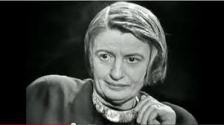 Ayn Rand was all the rage when I came of age in the 1960’s. The libertarian darling authored the hedonistic novels Altas Shrugged and The Fountainhead as well as a philosophical manifesto titled The Virtue of Selfishness. She once said, “If any civilization is to survive, it is the morality of altruism that men have to reject.” What light could the originator of Objectivism possibly shed on volunteering?
Ayn Rand was all the rage when I came of age in the 1960’s. The libertarian darling authored the hedonistic novels Altas Shrugged and The Fountainhead as well as a philosophical manifesto titled The Virtue of Selfishness. She once said, “If any civilization is to survive, it is the morality of altruism that men have to reject.” What light could the originator of Objectivism possibly shed on volunteering?
Merriam-Webster defines altruism as “unselfish regard for, or devotion to, the welfare of others.” Since Ms. Rand champions selfishness, it follows that she regards altruism as antithetical to human nature and an obstacle to progress. But if Ayn Rand’s perspective is knife-edge sharp, Merriam-Webster’s is too rosy. People do not give away their time and skills because we’re selfless. People volunteer because our self-interests are broader than pecuniary measures. We may not receive money for our effort, but we receive other rewards.
For most of my life, my volunteer pursuits mirrored my architectural career. There was logic to my 1978 Vista stint renovating houses in West Texas, designing The Boston Living Center pro bono in the 1990’s, building Musician’s Village in New Orleans post-Katrina, and constructing a school in Haiti after the 2010 earthquake. Though I’ve stopped working for money, I continue to provide architectural services for projects in the developing world. But more recent volunteer gigs are unrelated to design and construction. After a lifetime focused on analysis and technology, I enjoy connecting with individuals: teaching, mentoring, sometimes even touching. I tutor an immigrant from Morocco through YMCA International; Rida is preparing to take his TOEFL exam. I give individual yoga and stretching sessions to middle aged men with bad backs, sciatica, even Parkinson’s. I spend one morning a month at Career Collaborative, a Boston-based program that teaches job-getting skills to adults with challenging work histories.
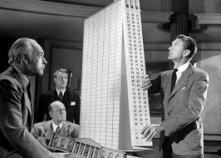 Ayn Rand would be flummoxed. Why decipher gerunds and participles, ease an aging man into pigeon pose, or suggest how an Ethiopian immigrant can leverage 7-11 experience into a job with benefits? I should be getting paid real money for doing what I know best. Howard Roark, the architect protagonist of The Fountainhead, never took an afternoon off from conceiving bold structures to dabble in community service.
Ayn Rand would be flummoxed. Why decipher gerunds and participles, ease an aging man into pigeon pose, or suggest how an Ethiopian immigrant can leverage 7-11 experience into a job with benefits? I should be getting paid real money for doing what I know best. Howard Roark, the architect protagonist of The Fountainhead, never took an afternoon off from conceiving bold structures to dabble in community service.
Yet, I don’t call what I do altruism, a somewhat paternalistic word with elitist overtones. I enjoy doing these things. My daily life doesn’t provide opportunities to meet African immigrants or Parkinson’s patients; my interactions with minimum wage workers are typically limited to check-out counters. Getting to know such different people broadens my experience, deepens my empathy, and makes me more appreciative of the privileges I enjoy. Being an architect shapes the world in a concrete yet detached way. Direct interactions through volunteering generate other satisfactions.
Self-interest is not fixed, it expands and restricts as our circumstances ebb and flow. When we’re poor, hungry and destitute, our self-interest is focused on survival. But when we reach a place where life’s essentials are met, we seek more complex satisfaction, working our way up Maslow’s Hierarchy of Needs in search of self-actualization. Unleashed from mere survival, self-interest extends beyond the limits of our skin. It becomes entangled with the well-being of others until, ultimately, we acknowledge that our self-interest depends on others having what they need as well. Once we have enough, true security results from contributing and sharing rather than hoarding.
I am in accord with Ayn Rand; no one acts except in his self-interest. But I am fortunate to be in a position where my self-interest transcends dollars and cents. If altruism means selfless, don’t call me that. But I’ll continue to volunteer, in the hope that I might offer value to someone else, and the certainty that I will receive benefit.


April 27, 2015
Cambridge Science Festival!
 April is prep month for “How will we live tomorrow?” I’m preparing for the trip and asking locals my question. The only official training I am doing is that I now ride my bike everywhere, in all weather. That’s no easy feat given the terrible weather we’ve had this spring. Dastardly potholes lurking beneath puddles caused back-to-back blowouts during downpours. However, I have learned that my Marmot parka is truly waterproof.
April is prep month for “How will we live tomorrow?” I’m preparing for the trip and asking locals my question. The only official training I am doing is that I now ride my bike everywhere, in all weather. That’s no easy feat given the terrible weather we’ve had this spring. Dastardly potholes lurking beneath puddles caused back-to-back blowouts during downpours. However, I have learned that my Marmot parka is truly waterproof.
This week was the Cambridge Science Festival, and, since so much of science is focused on the possibilities of tomorrow, I participated in several events. Not all communities engage science with the fervor of Cambridge. Although Seattle may be have the highest proportion of college graduates of any major city (53%), Cambridge leaves the majors in the dust.Seventy-four percent of adult Cantabridgians have at least a four-year degree (which may be how we get away using terms like ‘Cantabridgian’). Still, the Cambridge Science Festival is an excellent indicator that our community is diverse and our thirst for knowledge strong,
major city (53%), Cambridge leaves the majors in the dust.Seventy-four percent of adult Cantabridgians have at least a four-year degree (which may be how we get away using terms like ‘Cantabridgian’). Still, the Cambridge Science Festival is an excellent indicator that our community is diverse and our thirst for knowledge strong,
David H. Koch Institute for Integrated Cancer Research at MIT – Open House
 The Koch Institute’s slick new building with generous galleries makes a great place for demonstration tables staffed by eager graduate students and technicians in blue T-shirts with swirling DNA logos. The place was flooded with kids eager for science and the presenters focused on making cancer research accessible to all. A mouse trap game illustrated how cancer cells absorb more glucose and bypass the Krebs cycle, a Lego construction site showed how radiation breaks the DNA strand, Velcro attached to ping pong balls became ‘target cells’ when stuck to cotton balls, and children strained DNA from strawberries.
The Koch Institute’s slick new building with generous galleries makes a great place for demonstration tables staffed by eager graduate students and technicians in blue T-shirts with swirling DNA logos. The place was flooded with kids eager for science and the presenters focused on making cancer research accessible to all. A mouse trap game illustrated how cancer cells absorb more glucose and bypass the Krebs cycle, a Lego construction site showed how radiation breaks the DNA strand, Velcro attached to ping pong balls became ‘target cells’ when stuck to cotton balls, and children strained DNA from strawberries.
 The real appeal of this open house, from the perspective of interesting children in science, was how each child could identify with the presenters. More than half were women, at least half people of color. MIT graduate students today look nothing like that did when I was there 40 years ago, and school children look nothing like my classmates of fifty years ago.
The real appeal of this open house, from the perspective of interesting children in science, was how each child could identify with the presenters. More than half were women, at least half people of color. MIT graduate students today look nothing like that did when I was there 40 years ago, and school children look nothing like my classmates of fifty years ago.
Sustainability unConference – Earth Day at District Hall in Boston
This was my first experience with an unConference. I was intrigued by both the concept and the subject matter. I wore my “How will we live tomorrow?” bike shirt for the first time. Cocktail hours are uncomfortable for me, especially when I am wearing bright yellow.
 I wandered into the hall where organizers posted topics on a wall. “Write down what you’d like to talk about” a volunteer said. I added a note about how Boston might prepare to mitigate rising tides. I didn’t realize that my scribbling constituted offering to facilitate a workshop. Sure enough I got a bunch of votes and, in the spirit of an unCOnference, led a session. I drew a giant wave and some cool lettering on the white board, had people guess their home’s elevation above sea level as an ice breaker, led a brainstorm of the issues rising tides present to Boston, and outlined opportunities we could use to combat them.
I wandered into the hall where organizers posted topics on a wall. “Write down what you’d like to talk about” a volunteer said. I added a note about how Boston might prepare to mitigate rising tides. I didn’t realize that my scribbling constituted offering to facilitate a workshop. Sure enough I got a bunch of votes and, in the spirit of an unCOnference, led a session. I drew a giant wave and some cool lettering on the white board, had people guess their home’s elevation above sea level as an ice breaker, led a brainstorm of the issues rising tides present to Boston, and outlined opportunities we could use to combat them.
Facilitating a workshop, even on the fly, is easier for me than cocktail party mingling. I know how to curb the inevitable monopolizer and make sure everyone gets to talk. Next time I attend an unConference, I’ll know what I am in for in advance.
Harvard Observatory – Open House
It seemed odd to visit an observatory in the middle of the afternoon, but throngs of people climbed Observatory Hill on a sunny afternoon. The parking area was littered with solar telescopes, each st affed by T-shirted scientists keen explain the mysteries of sunspots and solar flares. People from 3 to 83 fixed their eyes into viewfinders to observe the wild choreography that was just another day on the sun. I arrived too late to take any of the tours offered, but wandered through ‘Ask an Astronomer’ hall, teeming with children and parents quizzing geeks about black holes and dark matter.
affed by T-shirted scientists keen explain the mysteries of sunspots and solar flares. People from 3 to 83 fixed their eyes into viewfinders to observe the wild choreography that was just another day on the sun. I arrived too late to take any of the tours offered, but wandered through ‘Ask an Astronomer’ hall, teeming with children and parents quizzing geeks about black holes and dark matter.
In one classroom, three different volunteers demonstrated Microsoft’s Worldwide Telescope on immense screens. This is a free program anyone can download. It turns your laptop into a telescope, Goggle Earth for the stars. The clarity is amazing; the scale and scope of the program is phenomenal. It enlarged my understanding of what it means when we say the Internet puts the world at our fingertips. The children in the audience, mostly eight to ten year olds, a good mix of boys and girls but more heavily Asian than the population as a whole, asked question after question. The adults sat on the sidelines, dumbstruck.
 One little boy asked, “Does the Universe ever end? Mary Patterson, the Harvard Observatory Ambassador replied, “Well, these images are three billion light years away. At the speed of light, it would take us three billion years to reach them. And nothing in this image indicates it will end. So, realistically, the universe is infinite.”
One little boy asked, “Does the Universe ever end? Mary Patterson, the Harvard Observatory Ambassador replied, “Well, these images are three billion light years away. At the speed of light, it would take us three billion years to reach them. And nothing in this image indicates it will end. So, realistically, the universe is infinite.”
That may be true, but Microsoft Worldwide Telescope illustrates that the universe is also intimate; that we each carry it around with us in our laptop; that we can view it at our leisure and manipulate our relationship to it. Science teaches us that the universe is vast, but science also makes us feel powerful within it.


April 23, 2015
The Gear: A Year’s worth of Stuff in Two Bags
 When you plan to travel by bicycle for a year, you think hard about what to carry, because your feet have to propel every ounce thousands of miles. Although it’s possible to hang four, five, even six bags on the front, back, or sides of a bike, I want only one pair of panniers plus accessories that clip directly to the frame. Everything has to be compact, light, and essential.
When you plan to travel by bicycle for a year, you think hard about what to carry, because your feet have to propel every ounce thousands of miles. Although it’s possible to hang four, five, even six bags on the front, back, or sides of a bike, I want only one pair of panniers plus accessories that clip directly to the frame. Everything has to be compact, light, and essential.
I addressed the challenge, as I do most problems, by creating a spreadsheet. The main categories: bike-mounted items, clothing, communications, toiletries, repairs, and miscellaneous. I vetted the list through my son Andy. Since he hiked the Appalachian Trail a few years back, he’s expert at packing.
The bike-mounted items are easy: front and rear light, air pump, two water bottles, lock, helmet, and odometer. Whenever I lock the bike, the helmet stays with it. A pair of Ortlieb panniers will hang on either side of the back rack. My Surly Long Haul trucker has already aced a 3,000-mile junket. I know its dual brakes, 21 gears, and Brooks saddle are up for the challenge of pedaling five times that distance.
Although it seems counterintuitive, going from a ten-room house to a pair of panniers required more shopping than I’d done in years.
Clothes. My big splurge was three custom cycling jerseys (Pactimo) advertising my question. Bright yellow, of course. I layer on a yellow down jacket (North Face), and/or yellow sh ell (Marmot) as the weather requires. Yellow is my fundamental color- I want to be seen. Add two pair of cycling pants (EMS), and five pairs of socks (iQ). I’ve never liked clip-on shoes, so I purchased a new pair of New Balance 856’s, my only footwear for the journey. Although one pair of shoes is sufficient, one pair of gloves is not. I have three variations of palm-padded bike gloves: fingerless for warm weather, Gore-Tex for the cold and wet, with insert liners for when it’s even colder.
ell (Marmot) as the weather requires. Yellow is my fundamental color- I want to be seen. Add two pair of cycling pants (EMS), and five pairs of socks (iQ). I’ve never liked clip-on shoes, so I purchased a new pair of New Balance 856’s, my only footwear for the journey. Although one pair of shoes is sufficient, one pair of gloves is not. I have three variations of palm-padded bike gloves: fingerless for warm weather, Gore-Tex for the cold and wet, with insert liners for when it’s even colder.
 For off-bike wear I’m packing two black Technic shirts (EMS), one collared sun-protection shirt (Columbia) a pair of black microfiber paints (REI), a pair of microfiber shorts (Columbia), a swimsuit / yoga short (City Sports), three pairs of nylon underwear (Underarmour), a wool hat for cold days, a baseball hat to shade my noggin, and an ancient pair of scrubs (Yale-New Haven Medical Center laundry, but don’t report me on that). That’s it. Everything can be rinsed and hung to dry for the next day, except for scrubs and the socks. That’s why I need so many pairs.
For off-bike wear I’m packing two black Technic shirts (EMS), one collared sun-protection shirt (Columbia) a pair of black microfiber paints (REI), a pair of microfiber shorts (Columbia), a swimsuit / yoga short (City Sports), three pairs of nylon underwear (Underarmour), a wool hat for cold days, a baseball hat to shade my noggin, and an ancient pair of scrubs (Yale-New Haven Medical Center laundry, but don’t report me on that). That’s it. Everything can be rinsed and hung to dry for the next day, except for scrubs and the socks. That’s why I need so many pairs.
Communications. I am going all Apple: an iPhone 5S and 11” Macbook Air. Considering I did my last long trip with a cellular flip phone, paper maps, and a Dell Notebook, it’s a welcome upgrade. But I’m still old school in liking to use a mouse so I’ll tote one along with my chargers.
Toiletries. If there is anyone in the world with simpler toiletry needs, I have yet to meet him. A toothbrush, floss, and toothpaste (sorry dentist, leaving the Sonicare at home); first aid kit; soap with covered dish; microfiber towel; sunscreen; razor; Carmex; and Abreva. After having a short beard for over twenty years, I’ve decided it will be easier to shave regularly than carry my electric trimmer.
Repairs. This is not the place to scrimp. I am not particularly mechanical, but have to be able to keep my bike rolling. I’ll carry an extra tire, three tubes, Allen wrench set, three plastic tire levers and lubricant. I’ll need a tune-up and new chain every 2,000 to 3,000 miles. That will require a layover in Minneapolis, Denver, Seattle, and other cities along the route.
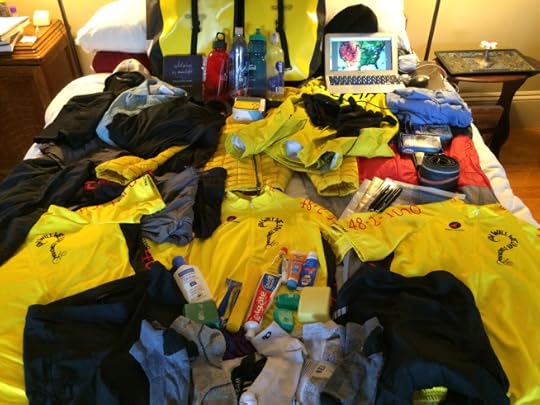 Miscellaneous. Every list needs a miscellaneous column. There’s the lightweight sleeping bag I’ll carry for particularly gorgeous nights. I’ll haul my already tattered personal copy of Architecture by Moonlight for reading events along the way. I’ll begin the journey with unread NY Times Magazines, but once they are consumed and recycled, I’ll pick up paperbacks along the way for casual reading and leave them for others. I’ll pack two additional water bottles just to claim the space, but won’t need to fill them until I get west of the Mississippi where water sources grow scarce. I’ll carry a portfolio with paper, tiny pads from Staples that fit in my bike shirt pockets, and several pens, as well as a 250-box of Vistaprint calling cards. I’ll have subsequent boxes mailed to me along the route. I’ll also carry three power bars to start, and add more snacks as the towns grow farther apart.
Miscellaneous. Every list needs a miscellaneous column. There’s the lightweight sleeping bag I’ll carry for particularly gorgeous nights. I’ll haul my already tattered personal copy of Architecture by Moonlight for reading events along the way. I’ll begin the journey with unread NY Times Magazines, but once they are consumed and recycled, I’ll pick up paperbacks along the way for casual reading and leave them for others. I’ll pack two additional water bottles just to claim the space, but won’t need to fill them until I get west of the Mississippi where water sources grow scarce. I’ll carry a portfolio with paper, tiny pads from Staples that fit in my bike shirt pockets, and several pens, as well as a 250-box of Vistaprint calling cards. I’ll have subsequent boxes mailed to me along the route. I’ll also carry three power bars to start, and add more snacks as the towns grow farther apart.
 I laid everything out on my bed. A lot of stuff, a lot of yellow. Then, I organized groups of items into plastic bags. Finally, I put everything in my two panniers. One for dry stuff (computer, book, clothes), the other for wet stuff (water, repair supplies, toiletries).
I laid everything out on my bed. A lot of stuff, a lot of yellow. Then, I organized groups of items into plastic bags. Finally, I put everything in my two panniers. One for dry stuff (computer, book, clothes), the other for wet stuff (water, repair supplies, toiletries).
The good news – everyt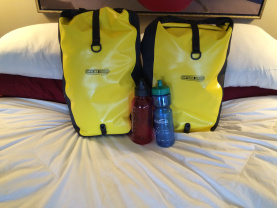 hing fit! The plastic bags were too flimsy, so I got an assortment of mesh bags to help organize the bags. Now my only worry is, what did I forget?
hing fit! The plastic bags were too flimsy, so I got an assortment of mesh bags to help organize the bags. Now my only worry is, what did I forget?


April 22, 2015
God is in the Detailing
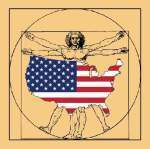 Last month, when the clocks sprung forward but my morning yoga teacher did not, I wandered the blacktop of Fresh Pond Mall on a Sunday morning and discovered Aladdin Auto, as well as some remarkable sculptures and signs promoting thelighter.org. Mahmood Rezaei-Kamalabad happened by and invited me for a return visit when he was open for the business of art, spiritual nourishment, and auto repair.
Last month, when the clocks sprung forward but my morning yoga teacher did not, I wandered the blacktop of Fresh Pond Mall on a Sunday morning and discovered Aladdin Auto, as well as some remarkable sculptures and signs promoting thelighter.org. Mahmood Rezaei-Kamalabad happened by and invited me for a return visit when he was open for the business of art, spiritual nourishment, and auto repair.
I stopped by last week on a sunny afternoon. The giant overhead door was open, revealing a conventional garage with two SUV’s jacked up on pneumatic hoists, as well as concrete block walls plastered with signs espousing God’s plan and a battalion of upright steel sculptures standing to one side, encircling a table and chairs. Mahmood greeted me like a long lost friend, poured us tea in glass-stemmed cups, opened a fresh package of dates, and gestured for me to sit.
[image error]Two giant flags hung above my head. The stars and stripes overlaid with gold Arabic lettering, and a royal purple banner with intersecting gold rings. Mahmood sat opposite. A felt skullcap hugged his noggin; grey locks billowed out below and merged with his full beard, framing his tan, weathered face. I asked about the rings. His smile revealed two rows of perfect, tiny teeth. Words flowed out from between them.
“Human beings are made of two parts; God is a single unity. We need to be two parts in order to go forth and multiply, but we seek, always, to become one, to become like God. When we find the spirit, we become one. The intersecting rings are our two parts; the edge of each ring goes through the center of the other. The focal point is the intersection. Unity lies within.
Mahmood guides me a to a small shrine with a thick book resting on a podium. “The Lighter” is printed in gold on the dull red cover. “This is the Koran, the Talmud, and the Bible, all bound into one volume. The Lighter is the intersection of these three religions.” He has assembled this anthology and sent one to the Library of Congress, the Vatican, and the National Libraries of Saudi Arabia, Iran and Israel. There is also a copy in the Qaanaaq Library in Greenland, the northernmost settlement on the globe. According to Mahmood, “The Lighter sits on top of the world.” It also perches in a garage in Cambridge.
[image error]Mahmood lays a black cardboard with his intersecting circles on the lectern, asks me to align my index finger with the center of the image and stare as a third circle, the unity, rises off the image into space. I suggest, “It’s a spiritual hologram.” He seems pleased with that analogy.
Back at our tea he continues to unspool his fascinating explanation of our material and ethereal world. ”We look outward with our two eyes to find the unity, but the unity is not external, it is internal. We need to look out to see the multiplicity but then let the multiplicity reflects back on us, to penetrate our interior.” When I take out my pad to make notes, he stops speaking until I am finished. I find his simple pause both respectful and patient. He has stacks of drawings – sketches for his sculptures, variations on his intersecting rings. He makes a fresh diagram for me, two circles, our eyes, projecting out into the world, seeking the reflection that comes together within our head. What Buddhists call our third eye center. I wonder for a moment if perhaps all spiritual teachings are variations of the same theme. Then immediately recognize that no, there are two major variations: teachings that celebrate the god within us, and those that purport that god exists beyond.
I ask Mahmood, “How will we live tomorrow?” He doesn’t hesitate a moment “We will live in peace within ourselves. That peace will reflect to the exterior. Whatever is within me is within you.”
[image error]In less than half an hour, we are confidantes. He asks for a hug. He explains opposing forces in all of nature, the spherical energy that resides within all human beings. He leads me to the back of the garage, pausing for a moment to confer with a mechanic wrestling with a rear axle, to demonstrate his machine of human wellness. It’s a stretcher with straps and buckles, within a steel tubular frame, anchored laterally to another tubular frame, anchored vertically to a podium. Mahmood turns on the device. The stretcher rotates around a horizontal axis within a frame rotating around the vertical axis. A person strapped inside experiences spherical rotation. Watching it makes me stomach queasy.
I want to take a photograph but that seems wrong. The machine is rather crude, while the concept is elegant; the physical reality doesn’t do justice to the ideal. Mahmood explains how the machine will balance our internal systems with the external environment. I am reminded of Futurity, the Lisps musical about a Civil War era peace-making machine, Zen and the Art of Motorcycle Maintenance, and steampunk. Another vision of the future cloaked in technology of the past.
It’s time to go. He gives me his sketches. I give him my cycling card. We hug and express mutual love. Is he just another eccentric or a true visionary? I lean toward the latter. Because I want to believe there is a visionary in every eccentric, but also because I feel so full, rich in sunshine and light and human warmth. Mahmood knows something about axles and steel and the spirit. And he is generous in sharing it with anyone who takes the time to come his way.


April 16, 2015
The Responses: Whom am I Going to Ask?
 The more people who want to answer my question, “How will we live tomorrow?” the better. For starters, I plan to ask four specific groups: people I know; people I don’t know, people in power today; and people who offer up their ideas. That covers pretty much everybody in one form or another, but I’m open to other suggestions to encourage participation.
The more people who want to answer my question, “How will we live tomorrow?” the better. For starters, I plan to ask four specific groups: people I know; people I don’t know, people in power today; and people who offer up their ideas. That covers pretty much everybody in one form or another, but I’m open to other suggestions to encourage participation.
People I Know. This is the obvious, easiest group. I will contact the friends, family, and deep thinkers I already know and ask them whether they will grant me a single question interview. Alternatively, they may choose to script their response to my question instead, which is also fine by me.
People I Don’t Know. Like most Americans, I live in a bubble of like-minded folks. My particular bubble is well-educated, affluent, secular, male, and white. In other words, I’m privileged. Some might say I’m self-made, since I’m more educated and affluent than my family of origin, but I’ve received special benefits bestowed upon clever white guys. I don’t apologize for my position in society, but I acknowledge it stems as much from luck as effort. I am grateful for my good fortune.
[image error][image error][image error][image error][image error][image error]Although I know a few individuals outside my bubble – my Mormon brother, my Army nephew, and my black lesbian theologian friend – I need to get outside my bubble for a wider perspective. That’s why everyday I plan to ask at least one person I don’t know,“How will we live tomorrow?” More importantly, that’s why I’m planning a route that consciously brings me among people I don’t know. I want to go to Dearborn, MI because I don’t know any Muslims. I want to go to Williston, ND and Fresno, CA because I don’t know any itinerant workers. I want to go to Huntsville, AL because I hardly know anyone in the South. I want to ask eccentrics and journeymen, rich and poor, mansioned and homeless, young and old, ailing and robust.
People in Power Today. Tomorrow will not spring full-blown from nowhere. It will be built upon today. Therefore, I want to offer individuals in power now a podium to articulate their vision. In advance of coming to each state, I plan to contact the governor, U.S. Senators and Representatives to solicit their answer to my question.
[image error]When I get to Iowa, I’ll invite all the Presidential candidates to respond. I also plan to ask business, religious, social, and cultural leaders. I’d like to know whether there is confluence between Howard Schultz’ (Starbucks) and the Walton’s (Wal-Mart) view of tomorrow. Do Peter Morales (Unitarian-Universalist Association) and Pat Robertson share any common ground? What do entertainers who dabble in tomorrow, from the indie band, The Lisps (Futurity) to Christopher Nolan (Interstellar), have to say about tomorrow?
Please send me suggestions of influential people I should invite to answer my question. Make a comment here or contact me at fallonpaule@gmail.com. They won’t all answer, but if even some do, we can help shape our national conversation.
[image error]People Who Offer Up Ideas. Finally, I welcome anyone to answer my question, and I promise to post on this blog all the responses that meet the guidelines included below. Anyone who has an idea of how we can live tomorrow is invited to contribute.
I look forward to hearing from YOU.
__________
Guidelines. How to submit you answer to “How will we live tomorrow?”
– Answer the question, “How Will We Live Tomorrow?” in 500 words or less.
– Provide up to three supporting images, audio or video clips.
– Substantiate all statistics and references with relevant hyperlinks.
– Respect other people and their opinions – no trolls, rants or insults.
– Include your real name. This will be posted with your response.
– Provide a line or two about you – location, age, occupation, passion.
– Provide you contact information and tell me whether to post it with your response.
– Email your submission to fallonpaule@gmail.com. Thanks!


April 13, 2015
The Question: How will we live tomorrow?
 As I travel across 48 states, I plan to ask people along the way, “How will we live tomorrow?” Why ask a question? Why ask that particular question?
As I travel across 48 states, I plan to ask people along the way, “How will we live tomorrow?” Why ask a question? Why ask that particular question?
A ready question is a conversation starter. Traveling alone is conducive to meeting new people, but a question kickstarts the interchange. A provocative question expands my interactions beyond pleasantries.
More importantly, asking the same question across the full spectrum of people will frame my experience. The most rewarding travel balances a general plan with serendipity. It’s useful to have a route, some destinations, and expectations in mind, but not be a slave to preconception. My question is a key part of my general plan. I’m not just interested in seeing stuff. I’m interested in exploring America. I want an idiosyncratic, unscientific immersion into what makes our eclectic country tick.
So why ask, “How will we live tomorrow?” Because it is simple and open ended. It can literally refer to the next day, or invite speculations of the future. Yet like many seemingly simple things, each word is imbued with conscious thought.
How. ‘How’ is a logistical w[image error]ord. In strategic planning we developed a facilitation approach with clients that focused on first defining ‘why’ there was a problem or opportunity, then determining‘what’ the appropriate response was. Figuring out‘how‘ to accomplish the objective came last. If the‘why’ and ‘what’ were well articulated, the ‘how’followed naturally. But too often we got so bogged down in ‘why’ and ‘what’ we never got to ‘how’.
The United States is, without doubt, rich in snarly problems and ripe with fabulous opportunities. ‘Why’ we should move in a particular direction or ‘what’ most strongly binds us might offer interesting speculation, but they’ll generate less traction than one tire rotation among the millions I plan to pedal. ‘How’ is more tangible. ‘How’ acknowledges that we already have a bevy of rights and responsibilities, privileges and prejudices. We don’t act in a vacuum. Everything we do moving forward will tweak existing systems. It will shift the perceptions of who’s a winner and who’s a loser. In an existing, complex system, ‘why’ and ‘what’ can’t inform ‘how’. Instead, ‘how’ we act will determine ‘what’ we become and ‘why’ that’s worthwhile.
[image error]Will. I like this declarative word. “Should’ or ‘could’ are too squishy. True, our future isn’t in our full control. But we’re human beings, not dust mites floating on a random breeze. We have more control over our fate than any other creature on earth. We cannot prescribe our future, but we will influence it.
[image error]We. This is the key word in the question. Its not ‘I’, its not ‘you’ and its not ‘they’. ‘We’ is the only pronoun that fuses the individual and the collective. It acknowledges that the only viable future on a planet with seven billion people must consider the needs of many as well as singular. It’s a word a lot of Americans choke over, since history and geography have blessed us with more opportunities for individual expression than any other country on earth. But it’s a word worth embracing as we become ever more connected to each other.
[image error]Live. This is my optimistic word. I like to think we are going to live, as individuals, as a nation, as a species, for a long, long time. Many say otherwise. Some welcome our demise through The Rapture, others quake in fear that our planet will turn inhospitable. But I choose to think that we are caring enough and resourceful enough to find ways to continue living.
[image error]Tomorrow. Tomorrow is never more than 24 hours away. It is also the distant future. This is the word that makes my question both practical and ephemeral. It invites specific answers as well as fantastic speculation. It takes today as a given and projects us forward as far as we wish to go.



